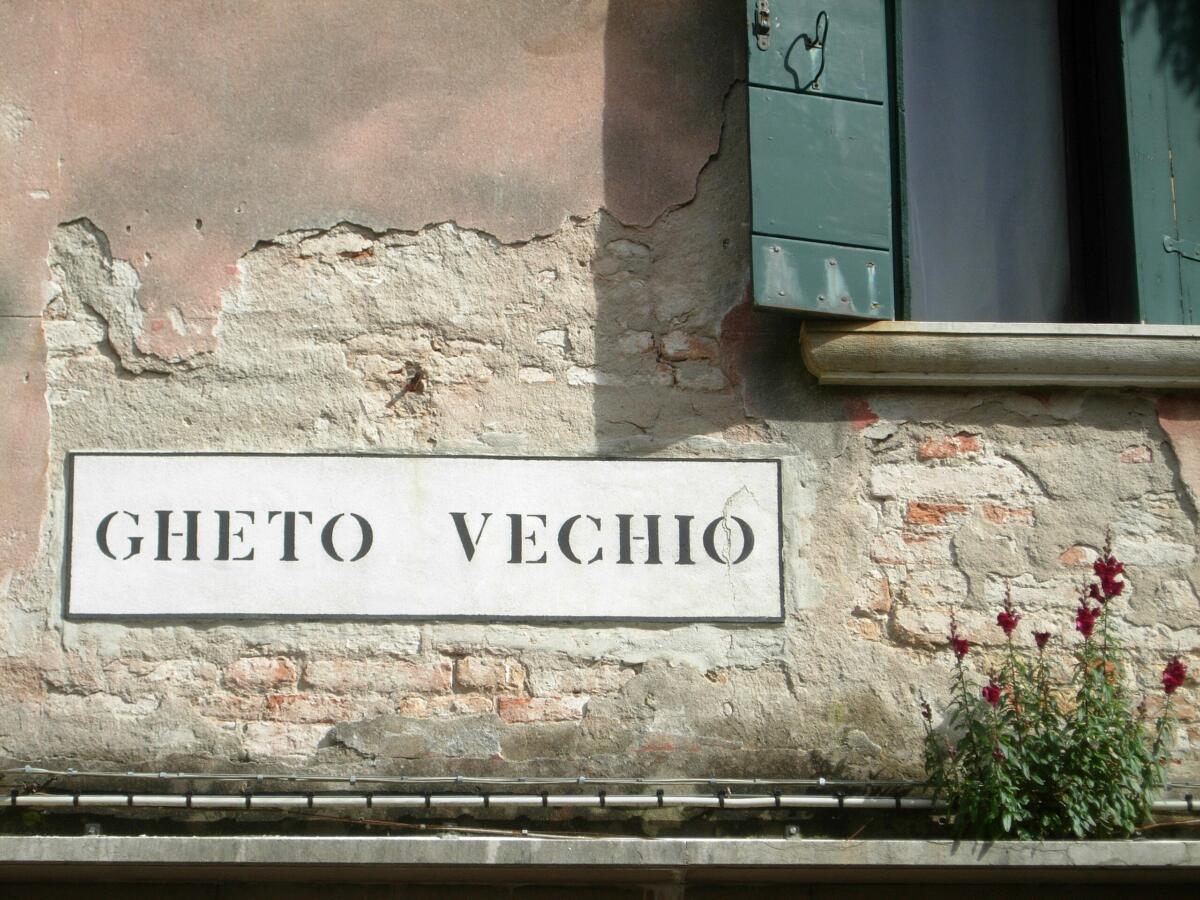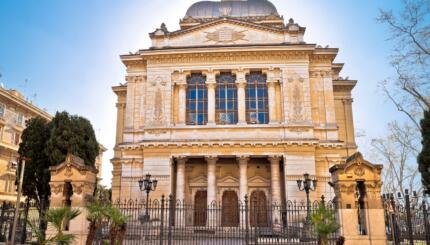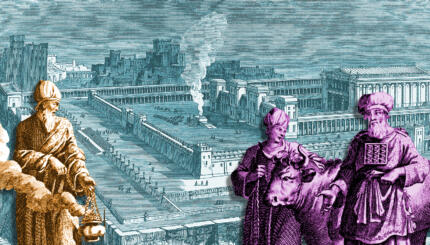Venice was not the first city to confine its Jews to a single quarter, but it was the first to lock them in at night. From 1516 until 1797 the Jews of Venice were obliged to live in a damp, over-crowded, squalid, tottering slum. And yet, despite the poverty, hardship and despair that characterized life in the Venice Ghetto, the prison city became the global heart of Jewish culture during the 16th and 17th centuries; the most vibrant Jewish center in Europe.
The first Jewish money lenders to be allowed to operate on Venetian territory arrived in 1298. The Venetians granted them a license to lend money, charged them a fee for the privilege, determined the rate of interest they could charge, and restricted them to dwelling in Mestre, on the Venetian mainland. They allowed them to enter the city of Venice itself for no more than 15 days at a time. However they could enter the city at any time should their lives be in danger because of an enemy invasion.

Help us keep Jewish knowledge accessible to millions of people around the world.
Your donation to My Jewish Learning fuels endless journeys of Jewish discovery. With your help, My Jewish Learning can continue to provide nonstop opportunities for learning, connection and growth.
In 1509, the Venetian Republic was invaded by the armies of the League of Cambrai. The Jews in Mestre, in danger of their lives, fled across the lagoon and entered the City of Venice.
Now that they were in the city, the Venetian Senate decided it was more convenient to allow the Jews to stay. The Jewish pawnbrokers were holding dozens of pledges deposited by their clients in return for loans; it made far more sense for them to stay in the city with their deposits than to have them go back to Mestre where they ran the risk of being plundered should another army invade. It was also more convenient for the poor of the city to be able to borrow money on the spot, rather than putting up with the cost and bother of traveling to Mestre. The Senate charged the Jewish community 14,000 ducats for the privilege of being allowed to stay. In 1511 they levied a tax of 5,000 ducats on the Jews in return for the continuing right to reside in the city.
From that time on, Jewish life in Venice was regulated by charter and taxation. The charters gave the Jews the right to live and lend money in the city, the tax they paid brought funds into the Republic’s treasury. The charters came up for renewal frequently and the level of taxation had to be renegotiated every time, as did the interest rate the Jews were allowed to charge on their loans. Since there was never a guarantee that an expiring charter would be renewed, Jewish life in Venice was always insecure.
The Church was not happy about the presence of so many Jews in the city. The preachers began calling for their expulsion. Unwilling to forego the convenience of having their money lenders close to hand, the senate decided, in 1516, to restrict them to one small area of the city. They set aside an old copper foundry, on the edge of the city in which all Jews were obliged to live. Surrounded by canals it would keep them confined and could be further sealed off with a drawbridge and gates. The area became known as the ghetto, a corruption of the Venetian word geto, meaning foundry. The name ghetto was adopted by other cities when they too hemmed their Jewish populations into confined areas. The world owes the word ghetto to Venice.
The ghetto consisted of four rows of houses, built in a square around a large, enclosed space or campo. During the day, Jews were free to leave the ghetto and Christians could come in but the gates were locked at night. The Jews were responsible for paying the salaries of the four Christian guards at the gates. The only people allowed to leave the ghetto once the gates were closed were Jewish doctors. Like everyone else, the doctors were instantly recognizable as Jews, as they were obliged to wear distinctive yellow head coverings: hats for the men, squares of cloth or coifs for the women. In time, as fashions changed, the yellow head coverings became red.
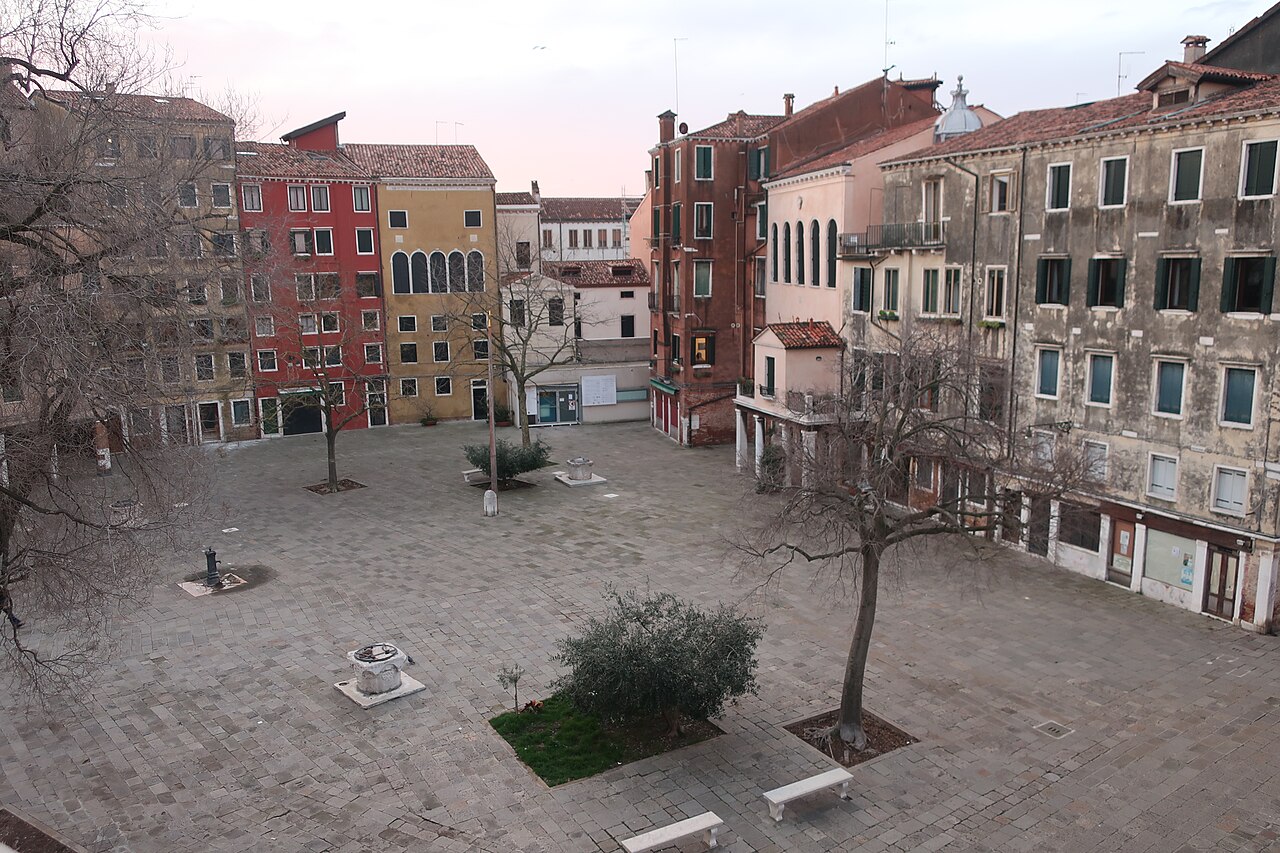
The narrow brick houses were too few to accommodate everyone comfortably. Although the Jews of Venice at the time numbered only a few hundred, the population density of the ghetto was at least twice that of the rest of the city. Almost as soon as they moved in, families started to divide and subdivide their tiny apartments to give themselves as much privacy as possible. They used timber partitions to minimize the load on the watery subsoil. In time, unable to extend their properties outwards due to lack of space, they would build upwards, creating towering, tottering terraces seven or eight storeys high.
The overcrowding was such that even small apartments accommodated ten or more people and many dwellings had no latrines or fireplaces. The campo itself was unpaved; there was mud, dirt and excrement everywhere, the stench was described as unbearable.
The ghetto was a place of work as well as a prison town. Pawnshops and second-hand stores occupied the bottom storeys of the houses, open fronted they looked out onto the square. Butcher shops, a baker and a tavern were squeezed in, as well as spaces for prayer, despite the Senate’s decree that no synagogues were to be built in the ghetto (that did change eventually).
The Jews organized their life in the ghetto as best they could. When the weather was right the campo functioned as a community center; it was the only place where space was not at a premium. Schoolteachers held classes, the judges of the Jewish court would adjudicate in disputes, barbers gave haircuts, peddlers hawked their goods, a busker might play hoping to earn enough for a meal, beggars were ubiquitous. Despite the restrictions on the jobs they were officially permitted to work at, stall holders in the campo provided most of the necessities a family might need for their daily life. There were fruit and vegetable stalls, wine, cheese and pasta merchants, a tailor, a hatter, even a bookshop.
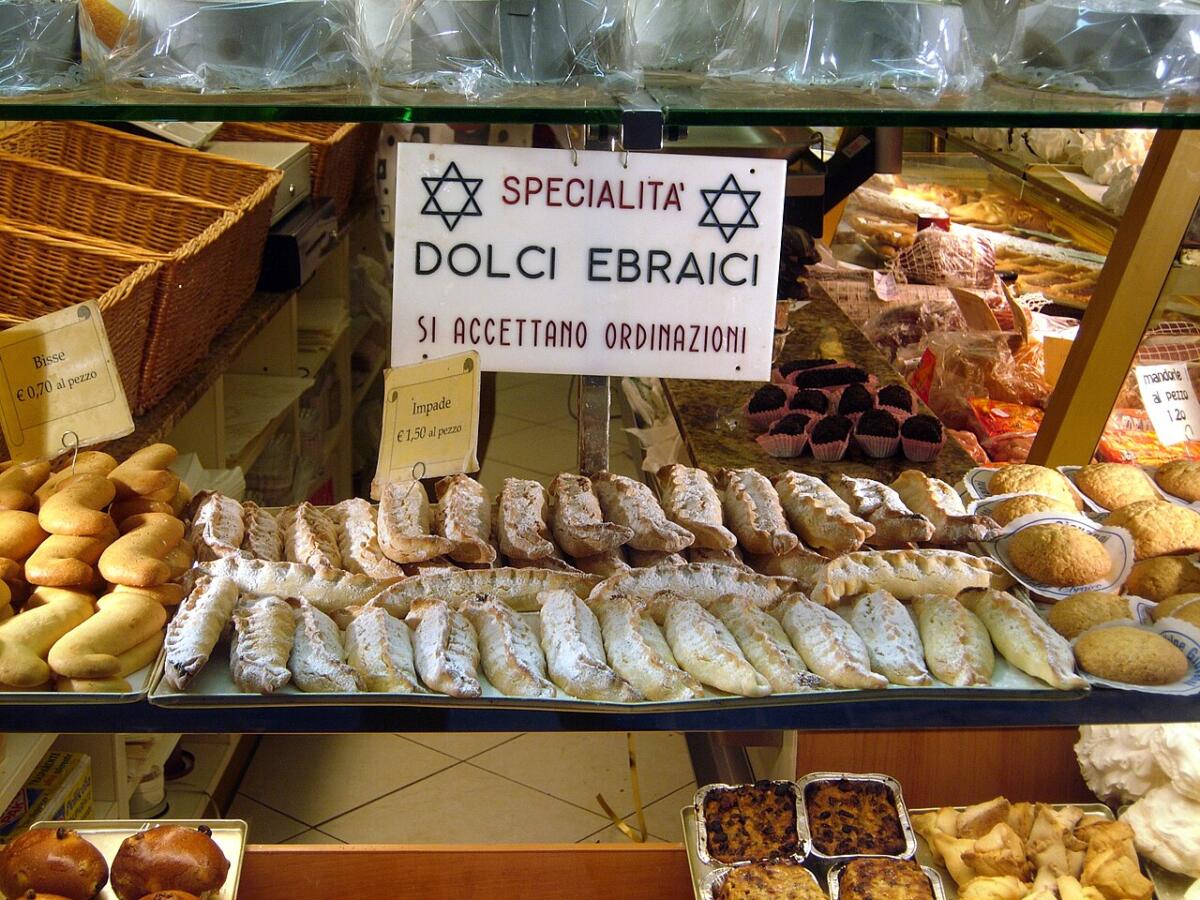
The ghetto was expanded twice to accommodate immigrants and merchants whose presence the senate believed would help the prosperity of the city. The first new area, opened in 1541, known as the ghetto vecchio, was built on an empty area between two canals, and connected by a bridge to the existing ghetto. The second area, added in 1633, was the ghetto nuovissimo. Ostensibly built to reduce overcrowding in the ghetto, its true purpose was to allow more Jews to come in and thus increase the tax revenues.
Despite the squalor and overcrowding the Venice ghetto was a remarkable place. The presence of so many Jews living side-by-side encouraged an atmosphere of scholarship and creativity. Although segregated, Jews and Christians in Venice coexisted far better than in most other places in Europe.
Venice was the preeminent center of printing for Hebrew books; David Bomberg, a Christian, printed the first complete edition of the Talmud and the first rabbinic Bible. He was assisted and guided by scholars from the ghetto.
Sara Copia Sulam, Italy’s leading poet of the 16th century, held a literary salon in the ghetto, which Christians from across the city would attend. Christian nobles and clerics would also come in to hear the sermons of the noted rabbi, Leon Modena. Elijah Levita, David de Pomis and Simone Luzzatto are just some of the other scholars and philosophers who lived and worked in the ghetto. And when Henry VIII of England was seeking to divorce his first wife, Catherine of Aragon, he sent an envoy to Elijah Halfon to ask for a talmudic ruling. Visitors to the ghetto included Shabbetai Zevi’s prophet, Nathan of Gaza, the adventurer David Reuveni and the false messiah, Solomon Molcho.
The gates of the Venice ghetto were finally torn down when Napoleon conquered the city in 1797. But the area still continues to function as the center of Jewish life, since it is where the synagogues are.
When the Nazis entered Venice in 1943 they ordered the Jewish community’s president Guiseppe Jona to hand over the names of all the Jews in the city. They gave him two days to do so. He spent the time destroying every single document he could find relating to the Jewish community. He warned all the Jews to escape if they could, if not he told them they should hide. When he had done as much as he believed he could do, he wrote his will and committed suicide. The Germans never got their list of names. Two days later, when the Nazis raided the ghetto they found just over 100 people. Giuseppe Jona had taken his own life to save more than 1,000 others.
Harry Freedman is the author of seven books, including Shylock’s Venice: The Remarkable History of the Venice Ghetto (Bloomsbury Continuum), 2024.
